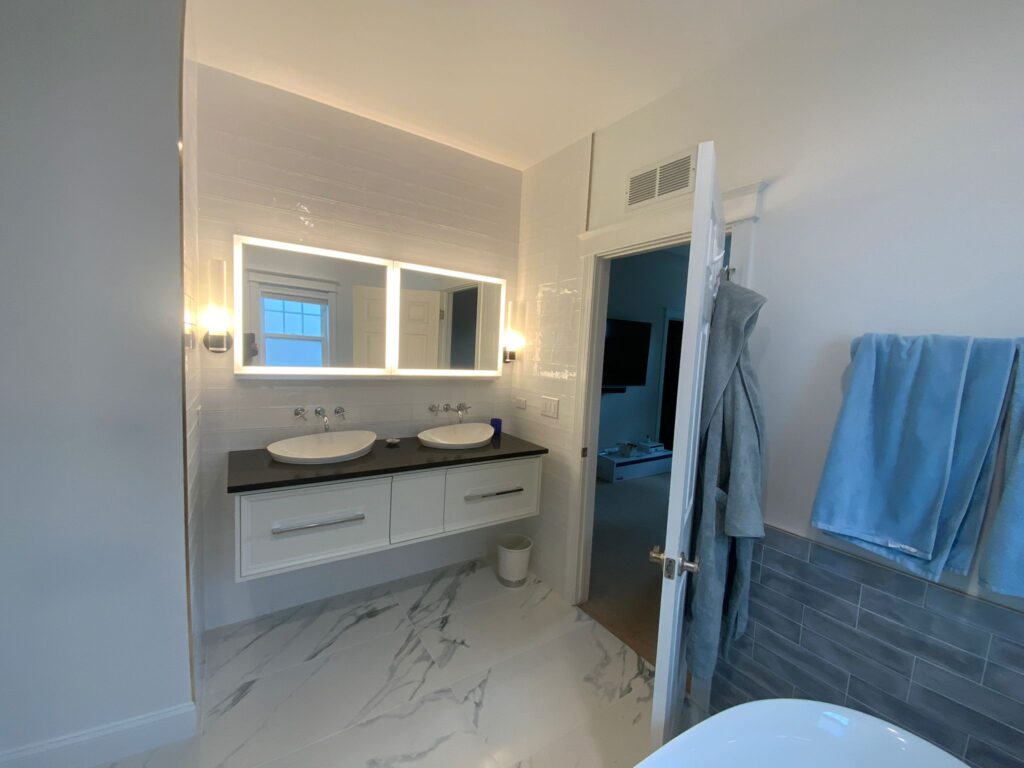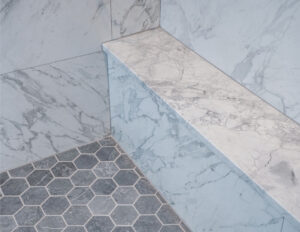How To Waterproof Your Basement Before Spring Thaw (And Avoid a Soggy Nightmare)
Alright folks, grab a coffee and pull up a chair. Spring’s teasing us with sunshine, but we all know what’s lurking just beneath the surface – literally. That glorious spring thaw? For your basement, it’s basically a ticking time bomb of potential water invasion. And trust us, nobody wants to discover their basement has transformed into an indoor wading pool come April. We’ve seen it too many times over the years, and honestly? It’s usually preventable with some smart moves before the snow turns to rivers. So, let’s talk about how to keep your lower level dry, cozy, and definitely not hosting any unexpected aquatic life.

Why Spring Thaw is Basically Your Basement’s Arch-Nemesis
Let’s get real for a sec. Winter piles up snow and ice, acting like a chilly blanket. Seems harmless, right? Wrong. When things warm up, that frozen mass melts fast. The ground around your foundation becomes saturated super quickly – way faster than it can drain away normally. This creates what we pros call hydrostatic pressure. Think of it like a giant, invisible hand pushing all that meltwater against your basement walls and floor, hunting for the tiniest crack, gap, or weak spot. Concrete isn’t magic; it will let water through under enough pressure. And poof! There goes your storage, your peace of mind, and maybe even that awesome home gym setup. Ever stepped on a squishy basement carpet? Yeah, not the vibe we’re going for.
Playing Detective: Figuring Out Your Basement’s Weak Spots
Before we start slapping on sealant like it’s going out of style, we need to know what we’re dealing with. You don’t need a fancy degree for this, just a keen eye and maybe a flashlight.
- The Obvious Stuff: Check for visible cracks in the foundation walls or floor (inside and out!). Look for efflorescence – that white, chalky residue – it’s basically salt left behind by evaporating water, screaming “Leak here!”.
- The Sneaky Stuff: Peek at your baseboards and corners for dark stains or peeling paint. Feel the walls – are they damp or cold in spots? Sniff the air – that musty “basement smell” isn’t just old boxes; it’s a red flag for moisture and potential mold.
- The Outside Story: This is crucial. Walk around your house after the next rain or during thaw. Is water pooling right next to the foundation? Are your downspouts dumping water directly beside the house instead of carrying it away? Is the ground sloping towards your home? All of these are like sending water an engraved invitation. Seriously, why make it easy for the enemy?
Building Your Fortress: Starting From the Outside (Because Duh!)
We always say the best waterproofing happens outside your basement. It’s way easier to stop water before it even thinks about getting in than to deal with the aftermath inside. This is Ground Zero for prevention.
- Grade School Matters (Literally): The ground around your foundation should slope away for at least 6 feet. We’re talking a drop of about 6 inches over that distance. If it’s flat or (gasp!) sloping towards your house, you’re basically building a moat around your castle. Not the good kind. Adding soil to regrade is heavy work, but it’s foundational (pun intended).
- Gutter Glory: Your gutters are your first line of defense. Make sure they’re clean! Clogged gutters overflow, dumping gallons right next to your foundation. Then, extend those downspouts at least 5-10 feet away from your house. Splash blocks help, but solid extensions are better. This one simple step solves so many minor basement moisture issues. Why wouldn’t you?
- Seal the Deal: Inspect your foundation walls from the outside (as best you can). Look for cracks or gaps where pipes or wires enter. Small cracks can often be filled with hydraulic cement or specialized polyurethane injection kits from the outside. It’s messy but effective DIY if you catch it early. Bigger cracks? That’s often a job for the pros, like our team at Verified Builders. We see foundations in Denver that have shifted slightly over time – common with our soil – and need proper structural repair before waterproofing even makes sense.
When Outside Isn’t Enough: Fortifying the Interior
Okay, so you’ve tackled the outside, but maybe you still see dampness or have a history of minor seepage? Or maybe your house is older and exterior fixes are tricky? Time to look inside. Interior methods manage water that does get through.
- Sealants: The Quick Fix (Sometimes): Interior waterproofing paints or sealants can help with minor moisture seeping through porous concrete (dampness, not flowing water!). They create a barrier. Crucial Point: They only work if applied to clean, sound concrete. Painting over efflorescence, loose material, or active leaks is like putting a band-aid on a burst pipe – useless and messy. Follow prep instructions religiously! IMO, these are best for very minor, non-pressurized moisture issues.
- Interior Drainage Systems (IDS): The Heavy Hitters: This is where we get serious. An IDS involves installing a drainage channel (like a French drain) around the inside perimeter of your basement floor, right against the footing. It collects water seeping in through the cove joint (where floor meets wall) or cracks, and channels it to a sump pump. The collected water is then pumped out and away from the house. This tackles water under pressure effectively.
- The Sump Pump: Your Basement’s MVP: If you have any significant water risk, a sump pump is non-negotiable. It’s the heart of an interior drainage system. A pit is dug in the lowest part of the basement floor, the pump sits inside, and it kicks on automatically when water reaches a certain level, ejecting it outside via a discharge pipe. Pro Tip: Get a battery backup! Power outages love to happen during storms when you need the pump most. Don’t be that person whose basement floods because the power blinked. FYI 🙂
Table: Basement Waterproofing Methods – What Works When?
| Method | Best For… | DIY Difficulty | Cost Estimate | Effectiveness | Longevity |
|---|---|---|---|---|---|
| Exterior Grading | Preventing surface water accumulation | Moderate | Low ($100-$500) | High (Prevention) | Long-term |
| Gutter/Downspout Mgmt | Redirecting roof runoff | Easy | Low ($20-$200) | High (Prevention) | Long-term |
| Exterior Sealants/Crack Repair | Small foundation cracks | Moderate | Medium ($50-$300) | Medium (Targeted) | Varies |
| Interior Sealants | Minor dampness/seepage (NO leaks!) | Easy | Low ($50-$200) | Low-Medium (Barrier) | 1-5 years |
| Interior Drainage (IDS) | Active leaks, hydrostatic pressure | High (Pro!) | High ($3k-$10k+) | Very High | 20+ years |
| Sump Pump (w/ Backup) | Managing collected water, flooding risk | Moderate-High | Medium-High ($500-$2k+) | Critical (Removal) | 5-10 years (pump) |
Knowing When to Wave the White Flag (And Call Us!)
Look, we’re all for DIY spirit. Cleaning gutters? Regrading a bit? Applying sealant to a tiny crack? Go for it! But let’s be brutally honest: some things scream “Call a pro!” Trying to tackle major foundation cracks, installing a complex interior drainage system, or dealing with persistent flooding yourself is a recipe for wasted time, money, and potentially making things worse. It’s like trying to perform brain surgery after watching a YouTube video. Not ideal.
- You see active water flowing in during rain/thaw.
- You have large cracks (wider than 1/4 inch) or many cracks.
- Your walls are bowing inwards (serious structural issue!).
- You have recurring mold or that persistent musty smell.
- DIY fixes haven’t worked (obviously!).
This is where a reputable basement contractor or general contractor specializing in foundation work becomes essential. Why gamble with your biggest investment? A company like Verified Builders, right here in Denver, has the experience, tools, and know-how to diagnose the real problem – whether it’s simple drainage or something structural – and implement the right, lasting solution. We’re not just slapping on band-aids; we fix the cause. Plus, if you’re thinking bigger – like turning that dry basement into a killer game room or home office as part of a basement remodel – we handle custom remodels too. It’s way smarter to waterproof before you invest in luxury home renovations downstairs, right? Don’t just search “basement contractors near me” and pick the first name; check reviews, ask for references, and make sure they specialize in waterproofing, not just bathroom remodeling or home additions. You want the nearest expert, not just the closest handyman.
FAQs: Your Basement Waterproofing Questions, Answered
-
“Can I just use waterproof paint instead of fixing the outside?”
Nope, nope, and nope. Waterproof paint is only a vapor barrier for minor dampness. It cannot withstand hydrostatic pressure. Water pushing against it from the outside will either bubble it off, find a way around it, or burst through. It’s a cosmetic fix at best for very specific, minor issues. Fix the source first! -
“How much does professional basement waterproofing actually cost?”
It varies wildly depending on the problem and solution. Simple exterior regrading or gutter fixes might be a few hundred bucks. Sealing significant foundation cracks from the exterior could be $500-$2500. A full interior drainage system with a sump pump typically starts around $3,500 and can go up to $10,000+ for large or complex basements. The only way to know is a proper assessment from a qualified remodeling company or basement remodel contractor. Getting multiple quotes is smart, but remember: the cheapest option often ends up costing more later. -
“My basement only gets damp, no standing water. Is it still a problem?”
Absolutely yes! Dampness leads to mold and mildew growth, which is a health hazard (allergies, respiratory issues). It also ruins drywall, insulation, wood framing, and anything stored down there. That musty smell isn’t just unpleasant; it’s a sign of an environment ripe for damage. Addressing dampness now prevents bigger, costlier problems (like structural rot or needing a whole house remodeling level fix) down the road. Don’t ignore it!
Wrapping This Up Before the Floodgates Open (See What We Did There?)
Spring thaw doesn’t have to spell disaster for your basement. Taking proactive steps now – checking your property, managing exterior water flow, and understanding when to call in reinforcements like Verified Builders – is the key. Whether it’s a simple downspout extension or a full interior drainage system, the goal is the same: keep your foundation dry and your home healthy. Remember, waterproofing is an investment in your home’s value and your own peace of mind. Ignoring it is basically gambling, and the house usually wins that one. So, don’t wait until you hear the ominous drip-drip-drip. Get out there, do your checks, tackle what you can, and if the job looks bigger than your toolbox can handle, give us a shout. We’re your nearest Denver experts ready to help you conquer spring thaw like a boss. Let’s keep that basement dry together! 🙂


